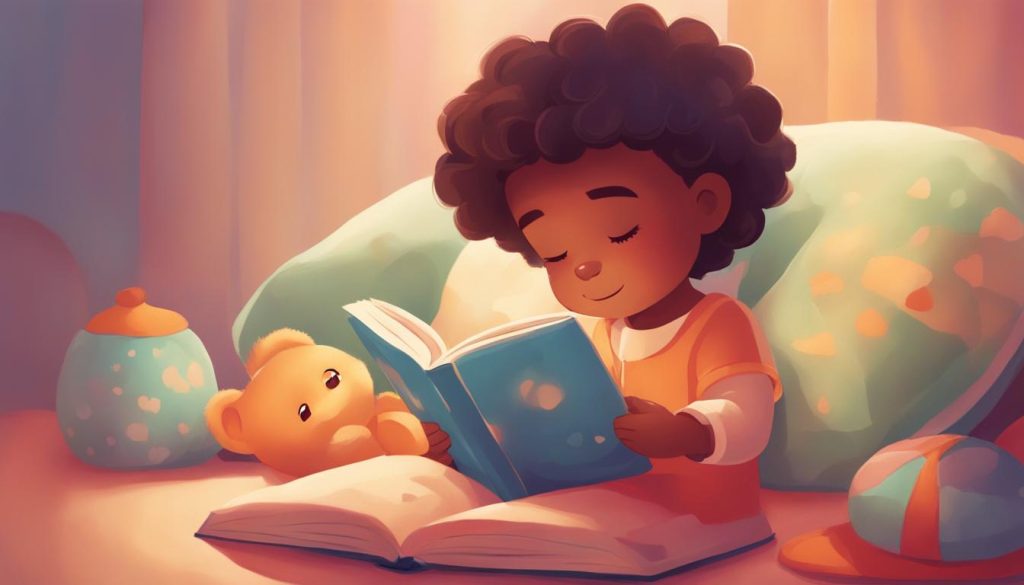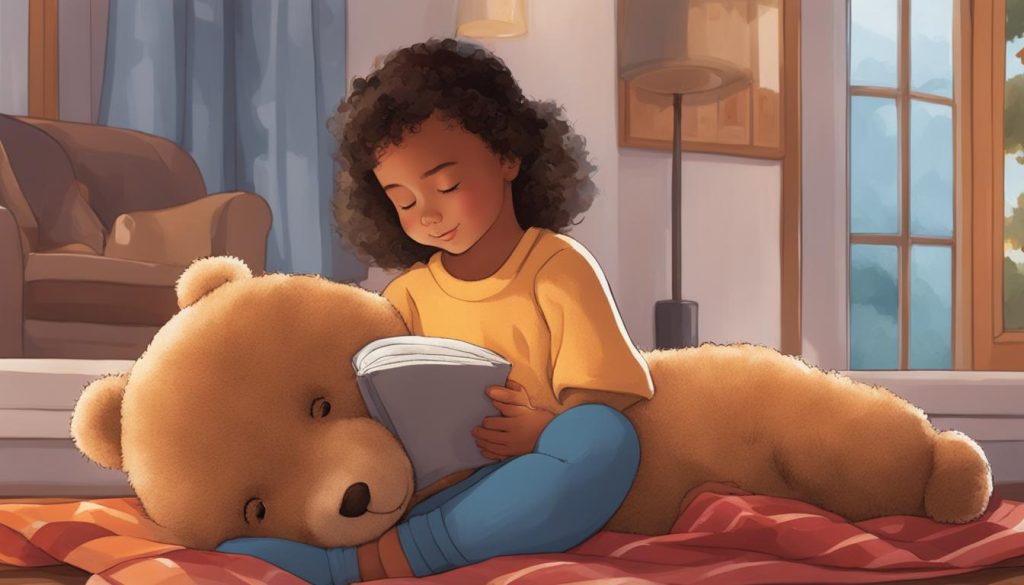Weighted stuffed animals have become increasingly popular as therapy toys for individuals with autism. These specially-designed plush toys provide deep pressure touch, which can have a calming effect on the nervous system. The additional weight distributed throughout the stuffed animal creates proprioceptive input, promoting a sense of security and relaxation. This can be particularly beneficial for individuals with autism who experience sensory processing difficulties.
Studies have shown that deep touch pressure can help reduce anxiety, improve sleep quality, and aid in self-regulation. Weighted stuffed animals serve as emotional support tools, offering comfort and companionship during challenging times.
What Are Weighted Stuffed Animals?
Weighted stuffed animals are plush toys that are specifically designed to provide deep pressure touch, making them valuable tools for individuals with autism and sensory processing difficulties. These soft toys are heavier than traditional stuffed animals, typically weighing between 2 and 5 pounds. The additional weight distributed evenly throughout the stuffed animal creates a calming effect on the central nervous system. This deep pressure touch stimulates the release of serotonin and dopamine, promoting relaxation and a sense of security.
With their soft and comforting texture, weighted stuffed animals can provide sensory stimulation and emotional support for individuals with autism, ADHD, and anxiety disorders. The weight of these toys mimics the feeling of a gentle hug, triggering a soothing response in the body. This can be particularly helpful during times of stress or overwhelm, helping individuals to self-regulate and find comfort.
Weighted stuffed animals come in various shapes, sizes, and materials, allowing individuals to choose one that suits their preferences. These sensory toys for autism can provide a sense of companionship and comfort, while also aiding in concentration and relaxation. Whether it’s a soft puppy, cuddly bear, or any other animal design, weighted stuffed animals can be both therapeutic and enjoyable for individuals with autism and ADHD.
Table: Comparing Weighted Stuffed Animal Options
| Stuffed Animal | Weight | Material | Size |
|---|---|---|---|
| Puppy | 3 pounds | Soft plush fabric | Medium |
| Bear | 4.5 pounds | Faux fur | Large |
| Cat | 2.5 pounds | Velvet fabric | Small |
When choosing a weighted stuffed animal, it’s important to consider factors such as weight, material, and size. Finding the right combination of these elements can maximize the therapeutic benefits and ensure a positive sensory experience for individuals with autism.
How Do Weighted Stuffed Animals Work for Autism and ADHD?
Individuals with autism and ADHD often experience sensory processing difficulties and tactile defensiveness. Weighted stuffed animals have been found to be effective tools in addressing these challenges by providing deep touch pressure, which helps to calm the nervous system and promote relaxation.
Weighted stuffed animals work by distributing additional weight evenly throughout the plush toy, creating proprioceptive input. This deep pressure touch sensation mimics the feeling of being hugged, triggering the release of serotonin and dopamine in the brain. These neurotransmitters are responsible for regulating mood and promoting a sense of well-being, which can be especially beneficial for individuals with autism and ADHD.
The deep touch pressure provided by weighted stuffed animals not only helps to reduce anxiety but also supports better self-regulation. By signaling to the body that there is no threat, the deep pressure touch can have both short-term and long-term calming effects. It aids in promoting sensory integration and improving sensory processing, allowing individuals with autism and ADHD to better navigate their environments.
Benefits of Weighted Stuffed Animals for Autism and ADHD:
- Reduces anxiety
- Promotes relaxation and calm
- Aids in self-regulation
- Improves sensory processing and integration
- Supports better sleep quality
- Provides comfort and companionship
Weighted stuffed animals offer a range of benefits for individuals with autism and ADHD. They can help to reduce anxiety, promote relaxation, and support better self-regulation. Additionally, they improve sensory processing and integration, leading to improved overall functioning. With their comforting and companion-like qualities, these therapy toys provide a sense of security and emotional support for individuals facing the challenges of autism and ADHD.
| Benefit | Description |
|---|---|
| Reduces Anxiety | The deep pressure touch provided by weighted stuffed animals helps to calm the nervous system, reducing anxiety and promoting a sense of calm. |
| Promotes Relaxation and Calm | The deep touch pressure mimics the feeling of being hugged, triggering the release of neurotransmitters that promote relaxation and a sense of well-being. |
| Aids in Self-Regulation | The deep pressure touch has both short-term and long-term calming effects, supporting better self-regulation and emotional stability. |
| Improves Sensory Processing and Integration | The deep touch pressure helps individuals with autism and ADHD better process and integrate sensory information, leading to improved overall functioning. |
| Supports Better Sleep Quality | The calming effects of weighted stuffed animals can help individuals with autism and ADHD achieve better sleep quality and restful nights. |
| Provides Comfort and Companionship | Weighted stuffed animals serve as emotional support tools, offering comfort and companionship during challenging times. |
Benefits of Weighted Stuffed Animals for Autism and ADHD
Weighted stuffed animals offer numerous benefits for individuals with autism and ADHD. These soothing toys can provide comfort, sensory stimulation, and emotional support to help these individuals navigate their daily lives more effectively.
The benefits of weighted plush toys for autism and ADHD include:
- Reduced anxiety: The deep pressure touch provided by weighted stuffed animals can help individuals with autism and ADHD feel calmer and more at ease. This can be particularly beneficial during times of stress or sensory overload.
- Promotes self-regulation: Weighted plush toys can aid in self-regulation by providing sensory input that helps individuals with autism and ADHD better manage their emotions and behaviors. The deep pressure touch can have a grounding effect and promote a sense of security.
- Improved sleep quality: Many individuals with autism struggle with sleep difficulties. Weighted stuffed animals can help improve sleep quality by providing a sense of comfort and security. The deep pressure touch can help relax the nervous system, making it easier to fall asleep and stay asleep.
- Sensory stimulation: Weighted plush toys offer sensory stimulation that can be soothing and engaging for individuals with autism and ADHD. The additional weight and tactile feedback can provide a calming effect and help individuals focus their attention.
- Emotional support: Weighted stuffed animals can serve as emotional support tools, offering companionship and comfort. These toys can provide a sense of security and reassurance, especially during challenging or overwhelming situations.
Overall, weighted stuffed animals can be invaluable tools for individuals with autism and ADHD. They provide a range of benefits that promote relaxation, self-regulation, and sensory integration, ultimately improving the well-being and quality of life for those who use them.
Choosing the Right Weighted Stuffed Animal for Your Child
When it comes to choosing a weighted stuffed animal for your child, there are a few important factors to consider. By taking these factors into account, you can ensure that you find the perfect plush toy that provides the right sensory input and meets your child’s individual needs.
1. Weight: The weight of the stuffed animal is crucial for its effectiveness. The general guideline is to select a plush toy that weighs around 10% of your child’s body weight. This weight provides the optimal deep pressure touch and sensory stimulation. However, it’s important to consider your child’s preferences and consult with a healthcare professional or therapist to determine the most appropriate weight for your child.
2. Texture: The texture of the stuffed animal is another important consideration. Choose a fabric that is pleasant to touch and offers a comforting sensation. Some children may prefer softer materials, while others may enjoy a slightly firmer texture. Experiment with different fabrics to find the one that your child responds to best.
3. Safety: Safety should always be a top priority when selecting a weighted stuffed animal. Check for any safety certifications or guidelines provided by the manufacturer. Ensure that the stuffed animal is made of non-toxic materials and does not contain any small parts that could pose a choking hazard.
4. Care Instructions: Lastly, consider the care instructions for the stuffed animal. Some may be hand wash only, while others may be machine washable. Choose a stuffed animal that is convenient for you to clean and maintain, as it will likely need regular washing to keep it hygienic and in good condition.
| Factors to Consider | Weighted Stuffed Animal | Traditional Stuffed Animal |
|---|---|---|
| Weight | Approximately 10% of child’s body weight | Lightweight |
| Texture | Pleasant to touch, comforting | Varies |
| Safety | Non-toxic materials, no small parts | Varies |
| Care Instructions | Machine washable or hand wash | Varies |
By considering these factors and taking the time to choose the right weighted stuffed animal for your child, you can provide them with a valuable sensory tool that offers comfort, relaxation, and support.
Tips for Using Weighted Stuffed Animals Effectively
When using weighted stuffed animals for individuals with autism or ADHD, it’s important to follow these tips to ensure effective use and maximum benefits:
1. Consult with a healthcare professional or therapist
Before introducing a weighted stuffed animal to your child, it’s recommended to consult with a healthcare professional or therapist who specializes in autism or sensory processing disorders. They can provide personalized advice and guidance based on your child’s specific needs and sensory preferences.
2. Select the right weight
Choose a weighted stuffed animal that is appropriate for your child’s weight and comfort level. The general guideline is to select a plush toy that weighs around 10% of your child’s body weight. However, it’s important to consider your child’s individual preferences and needs, as some children may prefer a slightly heavier or lighter weight. The goal is to provide deep pressure touch without causing discomfort or strain.
3. Gradually introduce the stuffed animal
Start by introducing the weighted stuffed animal gradually. Begin with short periods of use, allowing your child to get accustomed to the sensation of the deep pressure touch. Gradually increase the duration of use over time. This gradual introduction can help your child adjust to the sensory stimuli provided by the stuffed animal and prevent overwhelming or overstimulation.
4. Encourage use during relaxation or distressing times
Encourage your child to use the weighted stuffed animal during relaxation or distressing times. Whether it’s during naptime, bedtime, or when your child is feeling overwhelmed or anxious, the deep pressure touch provided by the stuffed animal can help provide a sense of comfort and calm. It can also serve as a coping mechanism during challenging situations.
5. Supervise for safety
It’s important to supervise the use of the weighted stuffed animal, especially with younger children, to ensure safety. Make sure your child is using the stuffed animal appropriately and that it is not causing any discomfort or restriction in movement. If you notice any signs of discomfort or if the stuffed animal becomes damaged or hazardous, discontinue use and consult with a healthcare professional or therapist.
6. Maintain cleanliness
Follow the care instructions provided by the manufacturer to ensure that the weighted stuffed animal remains clean and hygienic. Some may be hand wash only, while others may be machine washable. Regularly clean the stuffed animal to maintain its effectiveness and prevent the accumulation of dirt or allergens.
By following these tips, you can effectively utilize weighted stuffed animals as therapy toys for individuals with autism and ADHD. Remember to consult with professionals, select the appropriate weight, introduce gradually, encourage use during distressing times, supervise for safety, and maintain cleanliness. These plush toys can provide comfort, sensory stimulation, and emotional support, promoting better self-regulation and overall well-being.
Conclusion and Resources
Weighted stuffed animals can be a valuable tool for individuals with autism, providing comfort, sensory stimulation, and emotional support. These therapeutic toys have been found to help reduce anxiety, promote self-regulation, and improve sleep quality. By using deep touch pressure, weighted stuffed animals create a calming effect on the nervous system and aid in sensory integration.
When considering a weighted stuffed animal for your child, it’s important to choose one that suits their individual needs and preferences. Consultation with healthcare professionals or therapists can provide personalized advice and guidance to find the most suitable option. Additionally, there are resources available, such as Simple Spectrum, that offer information and support for families of children with autism and sensory processing issues.
Investing in autism sensory products, such as weighted sensory items and therapy toys for autism, can significantly improve the daily lives of individuals with autism. These products not only provide comfort and companionship but also assist in managing sensory sensitivities and promoting overall well-being.





